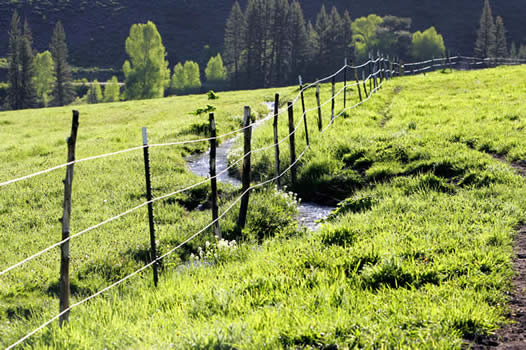Revegetate with Native Grasses

The best defense against weeds–land covered with healthy vegetation
The good news since the Fourmile Canyon fire is that most native grass and forbs will come back on their own in two to three years. The bad news is that, where there were small incursions of noxious weeds before the fire, they will expand their competition with native vegetation after fire.
The best defense against weeds of all kinds is land covered with healthy vegetation. Here in the mountains where we are all on wells, any large-scale seeding, even using seeds of native plants that grow in our arid environment, is a slow process with only precipitation to get seedlings going. For several years, weeds may predominate especially in dry years, but over years the natives will become established. We can hurry that along by dealing with the weeds when we find them, however small the infestation. To read how to identify and control noxious weeds common in Gold Hill, click [intlink id=”467″ type=”post”]here[/intlink].
Before the fire, Claire DeLeo, Plant Ecologist with Boulder County Parks and Open Space, provided us with a list of native grass species that are appropriate for the Gold Hill area. She first recommended Slender wheatgrass, a tall growing grass, knee height or taller, readily available from any major seed company. It is a cool season grass, best sown in the mountains in the early spring, providing cover quickly and competition for weeds. DeLeo’s list also includes other good choices for native grasses for Gold Hill: Blue grama, Nodding Brome, Fringed brome, Canada Wildrye, Rocky Mt. fescue, Junegrass, and Western wheatgrass. For those who wish to seed only short grasses for the wildfire defensible space around their homes, their choices in the list are Blue grama, Rocky Mountain fescue, and Junegrass. The seed companies may alternatively suggest Sheep fescue, which looks like Rocky Mt. fescue but is from Europe.
Soon after the Fourmile Canyon fire of September, 2010, Deleo warned that seeding will not provide erosion control the first year after a fire. It may control erosion if done two and three years after a fire, “but the native vegetation is also recovering in that time frame.” Another seed mixture formulated by DeLeo is the Fourmile Canyon Fire Seeding mix which will be used by County and Federal agencies for erosion and weed control along roads in the burn area.
If you decide to seed your land, ask suppliers what weeds are in their seed. Don’t buy seed with any percentage of cheatgrass. You might want to question the seed companies about where they collect their seed, because seed collected from the plains of Colorado might not survive as well as seed collected from higher elevations. Western Native Seed Company is known to collect from higher elevations. To see CSU Cooperative Extension’s lists of Colorado seed company sources of (not necessarily native) grass seed, click here.
Will you need to amend your soil and fertilize before seeding? Not necessarily if you are seeding with native grass seed, but maybe yes if you are seeding non-native seed, and yes if you are seeding anything after a construction project. When in doubt, get a soil test and then, if recommended, amend the soil with organic matter such as compost. Add nitrogen-fixing legumes such as lupine to improve soil health. Other wildflowers said to help improve soil after a fire are yarrow, heart-leafed arnica, and fireweed.
To sow seed evenly, mix the seed in a bucket with moist sand. Use a ratio of two parts seed to one part sand. Broadcast the seed mixture by hand. Use the flat side of a rake to smooth the soil over the seeds and lightly tamp by walking on it. Place a thin layer of weed-free hay or straw mulch over the seeded area to retain moisture and keep birds from eating the seed. As weeds germinate, hoe them out before they can take hold and spread.
_